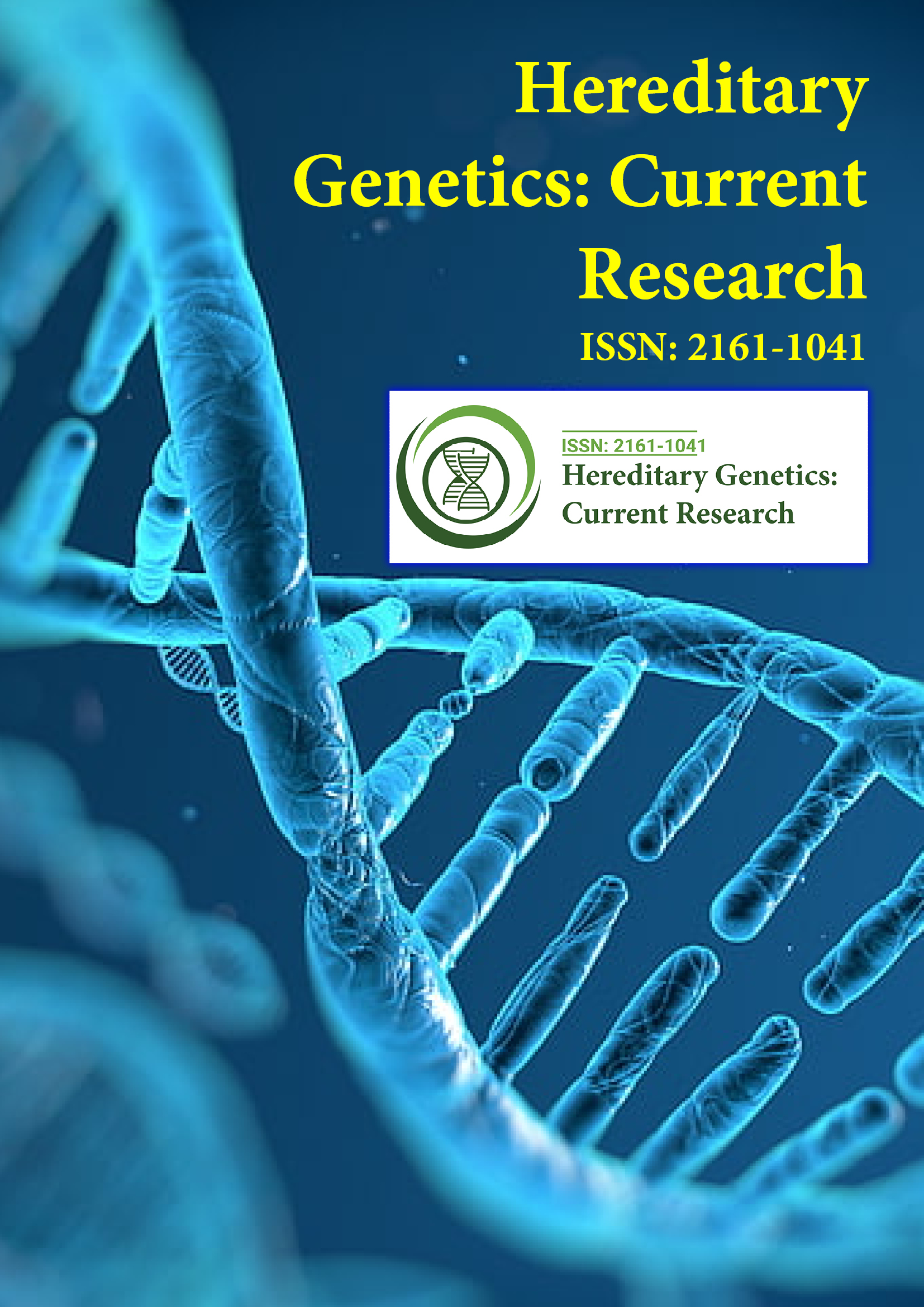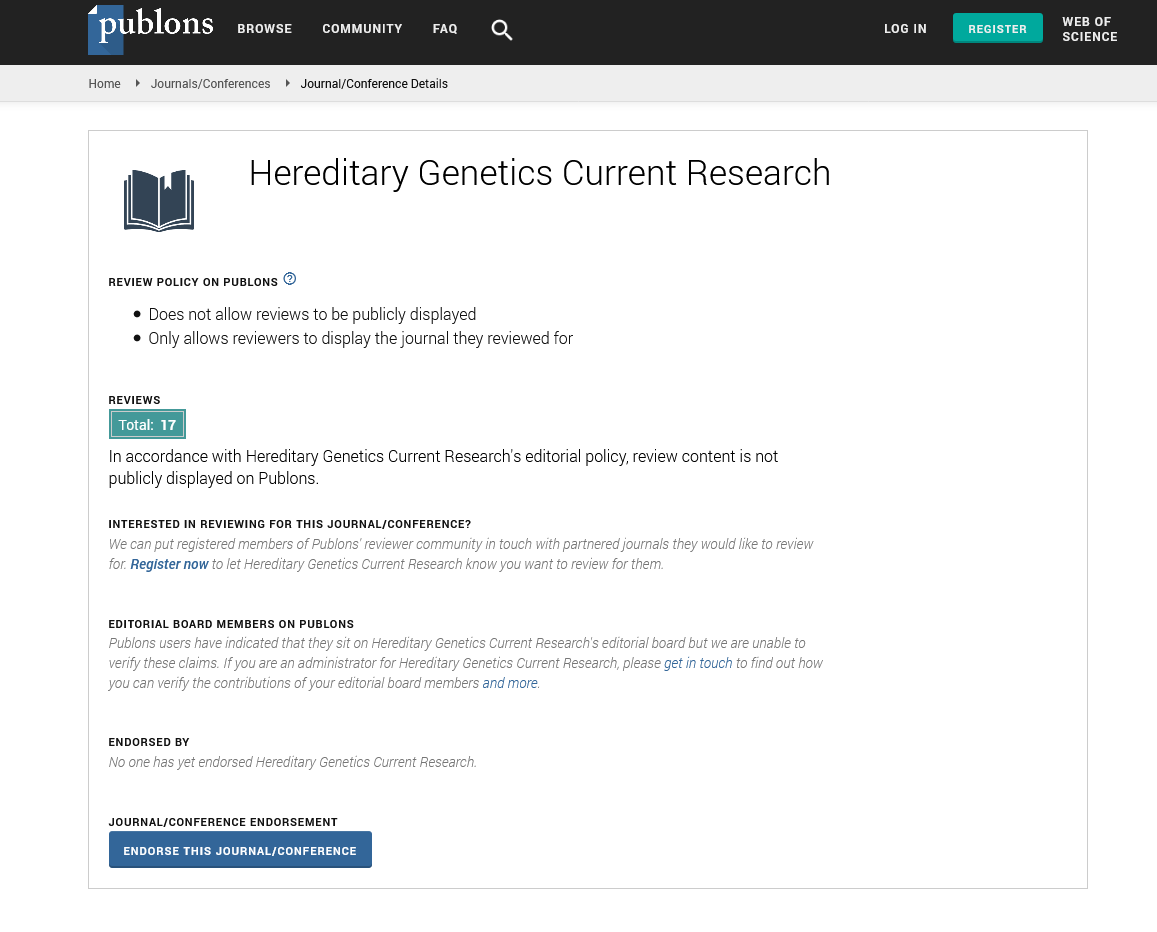Indexed In
- Open J Gate
- Genamics JournalSeek
- CiteFactor
- RefSeek
- Hamdard University
- EBSCO A-Z
- NSD - Norwegian Centre for Research Data
- OCLC- WorldCat
- Publons
- Geneva Foundation for Medical Education and Research
- Euro Pub
- Google Scholar
Useful Links
Share This Page
Journal Flyer

Open Access Journals
- Agri and Aquaculture
- Biochemistry
- Bioinformatics & Systems Biology
- Business & Management
- Chemistry
- Clinical Sciences
- Engineering
- Food & Nutrition
- General Science
- Genetics & Molecular Biology
- Immunology & Microbiology
- Medical Sciences
- Neuroscience & Psychology
- Nursing & Health Care
- Pharmaceutical Sciences
Opinion Article - (2025) Volume 14, Issue 1
Bone and Soft Tissue Tumor Using Optical Genome Mapping and Next-Generation Sequencing in Clinical Diagnostics with the Advent of Bioinformatic Frameworks
Tyagi Melanie*Received: 26-Feb-2025, Manuscript No. HGCR-25-28184; Editor assigned: 28-Feb-2025, Pre QC No. HGCR-25-28184 (PQ); Reviewed: 14-Mar-2025, QC No. HGCR-25-28184; Revised: 21-Mar-2025, Manuscript No. HGCR-25-28184 (R); Published: 28-Mar-2025, DOI: 10.35248/2161-1041.25.14.300
Description
Bone And Soft Tissue Tumor (BSTTs) encompasses a diverse range of neoplastic conditions with significant clinical and diagnostic challenges. These tumors, including both benign and malignant forms, require accurate and early diagnosis for effective treatment and prognosis. Recent advancements in genomic technologies, such as Optical Genome Mapping (OGM) and Next-Generation Sequencing (NGS), have revolutionized the way these tumor are studied and diagnosed, offering powerful tools for identifying genetic alterations and understanding tumor biology at a molecular level. Furthermore, bioinformatic frameworks have emerged as crucial components in interpreting the complex data generated by these technologies, allowing for more precise clinical diagnostics and personalized treatment strategies.
The diagnosis of BSTTs traditionally relied on histopathological examination and radiographic imaging. However, these methods are not always sufficient for distinguishing between different types of tumor or for identifying underlying genetic mutations that may guide treatment decisions. Over the last decade, there has been a marked shift towards integrating genomic approaches into clinical diagnostics, providing a more detailed molecular picture of tumor and allowing for the detection of rare genetic alterations that are not visible through conventional methods.
Optical Genome Mapping is an innovative technology that enables the visualization of long-range structural variations in the genome, such as copy number changes, translocations and other chromosomal abnormalities. OGM works by labelling DNA with fluorescent markers, then using high-resolution imaging techniques to produce a high-quality map of the entire genome. This approach is particularly advantageous for analyzing complex genomic alterations that are challenging to detect using traditional sequencing methods. For bone and soft tissue tumor, OGM has proven to be especially valuable in identifying structural variations that are implicated in tumorigenesis, such as gene fusions and deletions, which may be missed by other genomic techniques.
One of the key strengths of OGM is its ability to provide a comprehensive overview of structural variants across the entire genome, enabling the detection of abnormalities that contribute to tumor development. For example, in cases of osteosarcoma, a common bone cancer, OGM has been able to identify genomic rearrangements that contribute to tumor progression and metastasis. Similarly, in soft tissue tumor like synovial sarcoma, OGM can detect characteristic translocations, such as the translocation, which are critical for diagnosis and have therapeutic implications. The high-resolution nature of OGM allows for the detection of such structural alterations with greater sensitivity and accuracy compared to traditional cytogenetic methods.
On the other hand, Next-Generation Sequencing provides a comprehensive analysis of the nucleotide sequence of DNA, enabling the detection of point mutations, insertions, deletions and other small-scale genetic alterations. NGS has become a cornerstone of molecular diagnostics in oncology, including for BSTTs, due to its high throughput and ability to generate vast amounts of sequencing data in a short time. By sequencing the entire genome or targeted regions, NGS can identify mutations in genes that play crucial roles in tumor growth, such as tumor suppressor genes, oncogenes, and DNA repair genes.
These mutations may not be visible through traditional diagnostic methods but can have a profound impact on tumor behavior and response to therapy. For bone and soft tissue tumors, NGS has proven to be a valuable tool in identifying genetic mutations that drive tumorigenesis. Chondrosarcoma, a type of bone tumor, NGS has revealed mutations in genes such as IDH1 and IDH2, which are associated with tumor progression and poor prognosis. In soft tissue sarcomas, mutations in genes like TP53, MDM2 and CDKN2A have been implicated in the development of these tumors and may influence treatment decisions. NGS also allows for the analysis of tumor heterogeneity, which is critical in understanding the complex genetic landscape of these tumors and their potential for resistance to therapy.
While OGM and NGS provide invaluable insights into the genetic alterations associated with BSTTs, the sheer volume and complexity of the data generated by these technologies present a significant challenge in clinical practice. This is where bioinformatics plays a crucial role. The advent of advanced bioinformatic frameworks has enabled the integration, analysis and interpretation of vast amounts of genomic data, providing clinicians with actionable insights that can guide diagnosis and treatment.
Bioinformatic tools have been developed to process the raw data generated by OGM and NGS, identify relevant genetic alterations and correlate these findings with clinical outcomes. These tools can filter out irrelevant data, prioritize mutations based on their potential clinical significance and generate visual representations of the genomic landscape, making it easier for clinicians to interpret the results. Moreover, bioinformatics algorithms are increasingly being used to predict the functional impact of specific mutations, providing insights into how these alterations might affect protein function and contribute to tumorigenesis.
Citation: Melanie T (2025). Bone and Soft Tissue Tumor Using Optical Genome Mapping and Next-Generation Sequencing in Clinical Diagnostics with the Advent of Bioinformatic Frameworks. Hereditary Genet. 14:300.
Copyright: © 2025 Melanie T. This is an open access article distributed under the terms of the Creative Commons Attribution License, which permits unrestricted use, distribution, and reproduction in any medium, provided the original author and source are credited.

